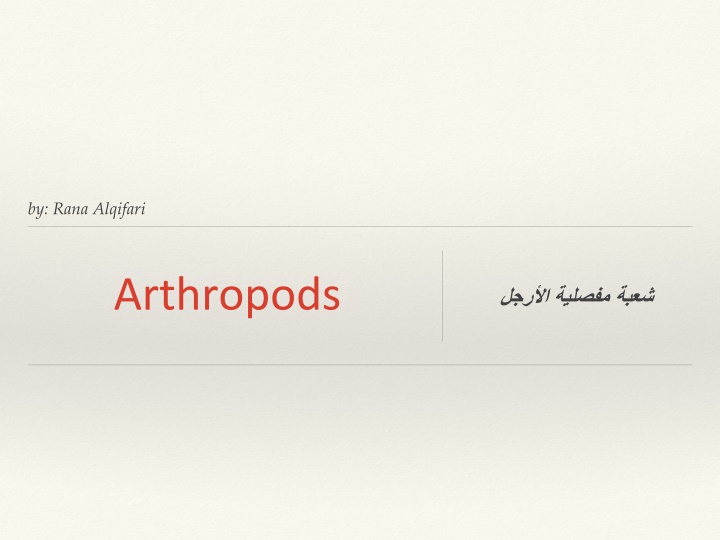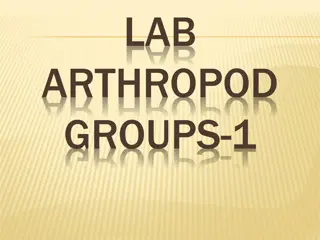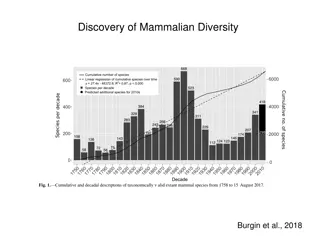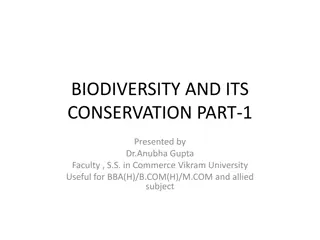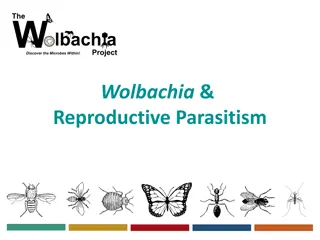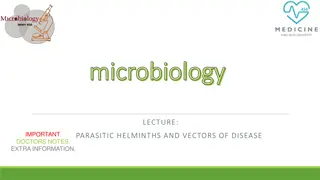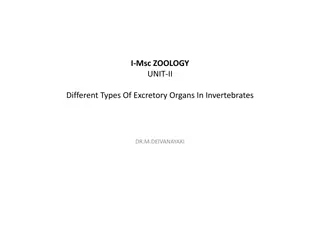Fascinating World of Arthropods: Diversity and Characteristics
Arthropods, the largest phylum in the animal kingdom, exhibit a wide array of characteristics and play crucial roles in various ecosystems. From crustaceans to insects, these invertebrates showcase segmented bodies, jointed appendages, and diverse respiratory systems. Explore the world of arthropods, including their significance, habitats, and unique traits.
Download Presentation

Please find below an Image/Link to download the presentation.
The content on the website is provided AS IS for your information and personal use only. It may not be sold, licensed, or shared on other websites without obtaining consent from the author.If you encounter any issues during the download, it is possible that the publisher has removed the file from their server.
You are allowed to download the files provided on this website for personal or commercial use, subject to the condition that they are used lawfully. All files are the property of their respective owners.
The content on the website is provided AS IS for your information and personal use only. It may not be sold, licensed, or shared on other websites without obtaining consent from the author.
E N D
Presentation Transcript
by: Rana Alqifari Arthropods
Arthropods An arthropod is an invertebrate with an exoskeleton, a segmented body,and jointed legs. There are four main kinds of arthropods: Crustacea Arachnida raknid (Spiders & Scorpions) Myriapoda Insects
characteristic Is the largest phylum of the animal kingdom, accounting for three-quarters of known animal species. Arthropods are found in almost all of the habitats that cover the Earth s surface. land, soil, in fresh water and brackish water as well as in the air shows great diversity in eating habits. Most arthropods play an important economic role in human life, some are beneficial for human like honey bees and silkworms and crustaceans. others are harmful to human working as vectors of diseases such as mosquitoes, lice, flies, ticks or scorpions.
characteristic of Arthropoda have segmented bodies, Jointed Appendages. The segmented bodies are arranged into regions, called tagmata (e.g., head, thorax, abdomen). have bilateral symmetry. The nervous system consists of dorsal brain and a double or single (fused) ventral nerve cord;. alimentary tract begin the mouth and ends at the anus as annelids
characteristic of Arthropoda Aquatic Arthropods possess gills for respiration or through the body surface. Terrestrial arthropods possess tracheae and book lungs as respiratory organs. Tracheae are asystem of tiny tubes that permit passage of gases into the interior of the body the configuration of the muscular system is good, consists of a group of independent muscle.
Subphylum: Crustacea Form a very large group of arthropods. Has a hard, exoskeleton, two pairs of antennae, and a mouth for crunching and grinding. Most crustaceans are free-living aquatic animals, but some are terrestrial (e.g.woodlice),some are parasitic (e.g. fish lice, tongue worms) and some are sessile (e.g. barnacles). More than 10 million tons of crustaceans are produced by fishery or farming for human consumption (shrimps). Crustaceans can re-grow certain parts of their body.
Subphylum: Crustacea shrimp Shrimp differ from their close relatives, the lobsters and crabs, in that they are primarily swimmers rather than crawlers. Body segmented and divided into two parts Cephalothorax (head &thorax fused) and Abdomen. Shrimp have 5 pairs of jointed walking legs, 5 pairs of swimming legs and Two pairs of antennae. Kingdom: Animalia Phylum: Arthropoda Subphylum: Crustacea Class: Malacostraca Order: Decapoda Family: Penaeidae Genus: Penaeus The body is covered with a smooth exoskeleton that must be shed as it grows. The shrimp's exoskeleton tends to be thinner greyish than most of the other crustaceans.
Subphylum: Myriapoda Terrestrial arthropods. breath through tracheae. Elongated body consists of a head and trunk composed of multiple tagmata carrying arthropod appendages. Kingdom: Animalia Phylum:Arthropoda Subphylum: Myriapoda Class: Chilopoda Family: Scolopendridae
Subphylum: Arachnida arthropod group that includes spiders, scorpions, and the mites and ticks. All arachnids have eight legs. Almost all extant arachnids are terrestrial. However, some inhabit freshwater environments. the body divided into two parts rather than three.
Subphylum: Arachnida Spider more than 43,200 species of arachnids. differ from insects in having eight legs rather than six. All spiders are predators, feeding almost entirely on other arthropods, especially insects. Kingdom: Animalia Phylum: Arthropoda Class: Arachnida Order: Araneae typically have a well-developed sense of touch.
Subphylum: Arachnida Scorpion Scorpions are relatively large among terrestrial arthropods. elongated arachnid species characterised by a segmented curved tail tipped with a venomous stinger at the rear of the body. Kingdom: Animalia Phylum: Arthropoda Class: Arachnida Order: Scorpiones most common and diverse in deserts, they also live in many other habitats. males usually are more slender and have longer tails than females.
